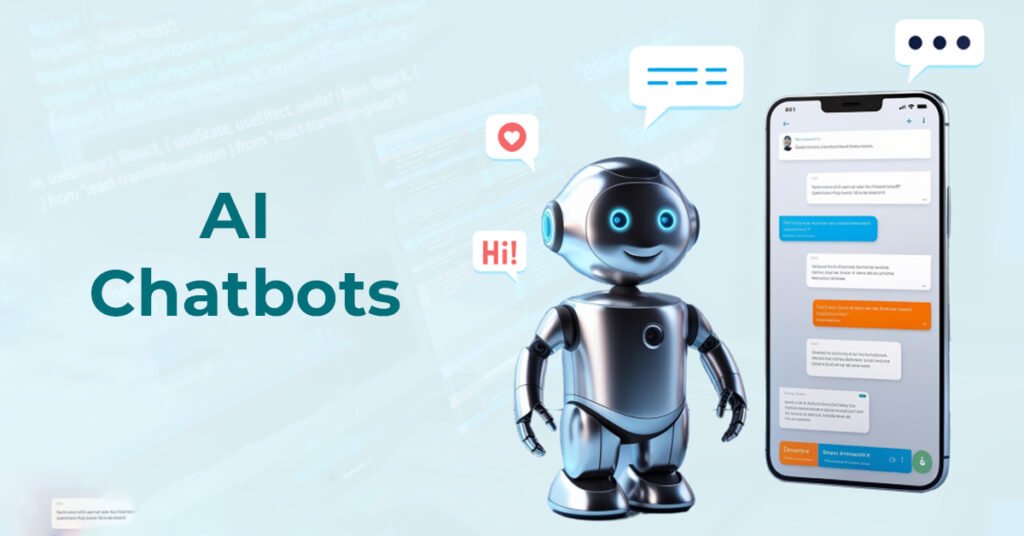Let’s be in your customers’ shoes for a while to understand!
Suppose, you just opened an eCommerce app to buy a” casual party outfit” and suddenly, you’re getting a personalized experience related to colors, size, style, and other relevant recommendations.
Now, ask yourself!
Is there any chance you could avoid buying anything from the store or visiting the app?
Well, you’ve got the answer in your mind!
As a business, you cannot afford to overlook the personalization aspect of your target audience.
Did you know?
More than 75% of customers are likely to purchase from a brand that offers personalized solutions!
But now, the question arises- What is the one magic tool that is responsible for driving personalized experiences?
“Chatbots”- That is it! From handling basic customer queries to suggesting products and personalizing user experience, chatbots have come a long way!
Let’s dive in!
What are Personalized AI Chatbots?
Personalized AI chatbots are advanced digital assistants that engage in conversations with users while tailoring their responses based on individual preferences, previous interactions, and the current context of the conversation. Unlike traditional chatbots that rely on fixed scripts, personalized AI chatbots utilize sophisticated technology to deliver customized experiences.
Key Features of Personalized AI Chatbots

Here is a list of the key features of personalized AI chatbots.
1. Natural Language Processing (NLP)
NLP enables chatbots to communicate effectively by analyzing the structure and meaning of sentences. This technology helps them understand user intent and context, allowing for accurate and relevant responses.
2. Sentiment Analysis
These chatbots can assess the emotional tone of a user’s message in real-time. By recognizing feelings such as happiness or frustration, they can adjust their responses to better connect with the user.
3. Predictive Analysis
Personalized AI chatbots use data analytics to anticipate what a customer might need next. By examining past purchases and behaviors, they can offer tailored recommendations that enhance the shopping experience.
How Personalized AI Chatbots Work?
Personalized AI chatbots are designed to learn from vast amounts of data. They analyze information gathered from various customer interactions across platforms like websites and social media. This data includes purchase history, browsing habits, and previous conversations, which help create detailed profiles of individual users.
When a user initiates a conversation, the chatbot employs machine learning algorithms to interpret their input and generate appropriate responses. This process involves:
- Understanding Context: The chatbot keeps track of the conversation flow, allowing it to respond appropriately even if the topic changes.
- Dynamic Responses: Instead of providing generic replies, these chatbots generate answers based on learned patterns from past interactions, making conversations feel more natural and engaging.
{Also Read: Top Trends Shaping the Future of Mobile Technology Tomorrow & Beyond}
What are the Benefits of Chatbots in Driving Personalized Experiences?
- Enhanced Customer Experience
Personalized chatbots provide tailored interactions by understanding individual customer behaviors and preferences. This leads to quicker, more relevant responses, making the overall experience smoother and more satisfying for users.
- 24/7 Availability
Chatbots can operate around the clock, ensuring that customers receive assistance at any time. This constant availability enhances customer satisfaction, as users can get immediate help without waiting for human agents.
- Improved Engagement and Conversion Rates
By offering personalized recommendations and guiding customers through their inquiries, chatbots boost engagement levels. This personalized approach can lead to higher conversion rates and reduced cart abandonment during online shopping.
- Efficient Data Collection
Chatbots gather valuable data during interactions, which can be analyzed to gain insights into customer preferences and behaviors. This information helps businesses refine their strategies and improve service offerings over time.
- Seamless Navigation and Support
Personalized chatbots can assist customers in navigating product catalogs or services more effectively. By understanding user needs, they can provide contextually relevant information, making it easier for customers to find what they are looking for.
The Role of Personalized AI Chatbots in 2025
In 2025, personalized AI chatbots will become increasingly significant due to several emerging trends:
- Better Emotional Understanding: AI chatbots will be able to recognize and respond to users’ emotions more effectively, thanks to improved sentiment analysis. This means they can understand how users feel and provide appropriate support.
- Speaking Multiple Languages: Advances in natural language processing (NLP) and machine translation will enable chatbots to communicate in various languages, making it easier to assist customers from different countries and enhance their satisfaction.
- Voice Interaction: While most chatbots currently rely on text, many companies will start using voice-first interfaces. This will allow users to talk directly to chatbots in a more natural way.

- Streamlined Automation: By 2025, chatbots will integrate seamlessly with AI systems that can handle various tasks like data collection and report generation without needing human help. This will make them central to automating repetitive tasks.
- Consistent User Experience: Personalized AI chatbots will create a unified experience across all customer interactions, whether online or in-store. By gathering data from different sources, they will ensure a smooth journey for users, similar to how Starbucks uses its app for a cohesive experience across platforms.
Best Practices for Deploying Personalized AI Chatbots
Phase 1: Identify Data Sources and Business Needs
The first step is to figure out what data the AI chatbot needs and which areas of the business will benefit the most.
To provide useful insights, the chatbot should have access to data from customer interactions, sales, feedback, and operational metrics. This phase should also set clear goals for the chatbot, like automating customer questions or spotting trends to improve decision-making.
Example: A retail company using a chatbot might focus on collecting data about customer buying habits to improve their marketing strategies.
Phase 2: Train and Customize the AI Chatbot
After identifying data sources, the next step is to train the AI chatbot. There is no denying that raining means adjusting the chatbot so it can understand and respond accurately to user inputs. This includes using Natural Language Processing (NLP) to grasp customer feelings, predict their needs, and offer relevant suggestions. The chatbot should be tailored to fit the specific needs of the business, which might involve industry-specific questions, support for multiple languages, or custom responses.
Example: In finance, a chatbot could be set up to give real-time investment advice based on the user’s risk profile and preferences.
Phase 3: Integrate with Existing Data Systems
For effective decision-making, it’s important to connect the AI chatbot with current data management systems (like CRM or ERP systems). This connection allows the chatbot to access, analyze, and update data in real-time. For instance, a WhatsApp AI chatbot can use CRM data to personalize interactions with customers, making them more accurate and relevant.
Example: In healthcare, a chatbot linked to patient management systems can provide updates, schedule appointments, and analyze feedback for better care.
Phase 4: Monitor and Adjust AI Performance
After launching the chatbot, it’s crucial to continuously monitor its performance. This involves tracking metrics such as response accuracy, customer satisfaction, and conversion rates. Adjustments should be made based on user feedback and changing business needs to keep the chatbot effective. Regular updates and retraining will help ensure that the AI stays aligned with new data and customer preferences.
Example: A real estate chatbot might change its recommendations based on trends in property inquiries as market conditions evolve.
Final Thoughts
When communication isn’t smooth, customers can lose interest in a business. However, using AI chatbots for customer engagement can help enterprises to keep their customers. AI chatbots act like digital helpers that allow companies to connect with their customers. Furthermore, they answer questions and provide business information, ensuring customers feel supported.
Ready to incorporate Chatbots into your mobile app development? If so, visit EitBiz or you can even drop us an email at info@eitbiz.com to discuss your app development needs today!







